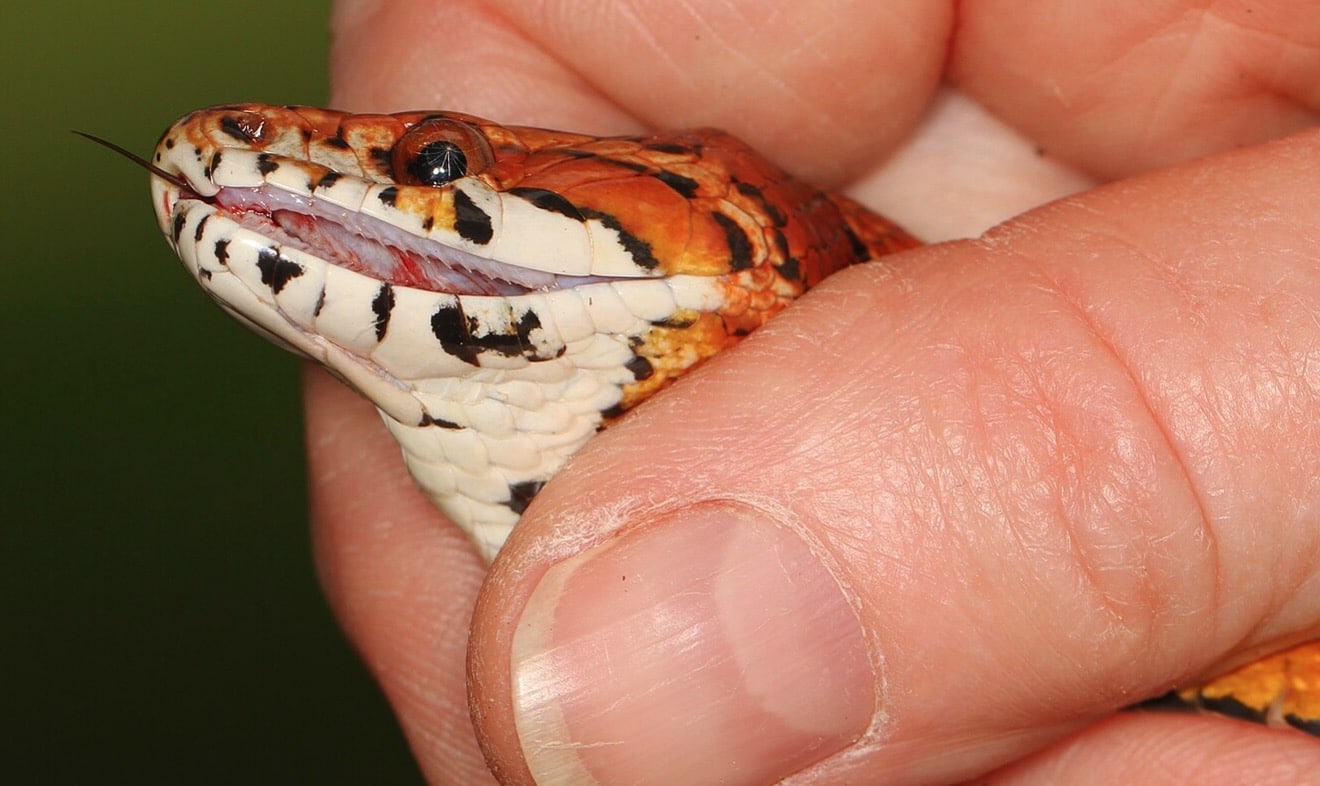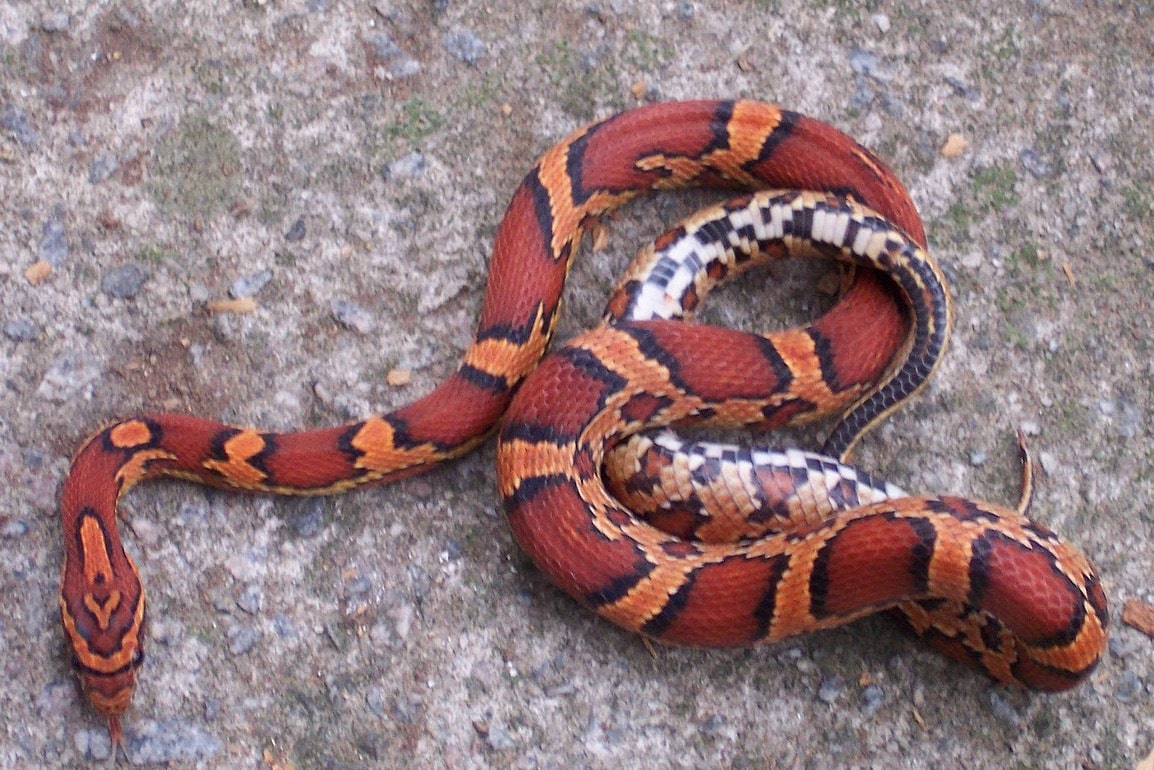| Question | How Long Do Corn Snakes Live? |
|---|---|
| Answer | Typically 15 to 20 Years |
| More Info | Corn snakes can live for a long time in captivity with proper care. Their lifespan in the wild tends to be shorter due to predation and environmental factors. In captivity, ensuring a proper diet, adequate housing, and regular veterinary care can extend their life. Some corn snakes have been known to live even longer than 20 years under optimal conditions. |
Providing a stable environment with the right temperature gradients, humidity, and hiding spots is crucial for maintaining their health and longevity.
Lifespan of Corn Snakes
Corn snakes are one of the most popular pet snakes due to their relatively long lifespan, especially when cared for under optimal conditions.
Factors Influencing Lifespan
Several key elements contribute to the longevity of corn snakes:
- Genetics: Just like any other living creature, the genetic makeup of a corn snake can influence its potential lifespan.
- Environment: A corn snake’s environment, including temperature, humidity, and cleanliness, plays a crucial role in their overall health and longevity.
- Diet: Proper nutrition is essential for a corn snake’s health, with a well-balanced diet helping to prevent obesity and other health issues.
- Healthcare: Regular check-ups with a veterinarian who specializes in reptiles can help catch and treat any health problems early on.
Average Lifespan in Captivity
When your corn snake is kept as a pet, you can expect a significant increase in its lifespan due to controlled conditions:
- Typical Range: Most captive corn snakes live between 15 and 20 years, with attentive care.
- Record Ages: Some corn snakes have been known to reach ages well into their twenties, with the record being over 32 years.
Average Lifespan in the Wild
Life in the wild presents more challenges for corn snakes, impacting their lifespan:
- Typical Range: In natural settings, corn snakes tend to live for about 6 to 8 years.
- Predation and Environment: The presence of predators and harsh environmental conditions contribute to their shorter lifespan in the wild.
Caring for Corn Snakes
To ensure a long and healthy life for your corn snake, you need to focus on their diet, create a suitable habitat, and be aware of common health issues that may arise.
Dietary Requirements
Corn snakes are carnivorous and thrive on a diet that primarily consists of rodents.
- Frequency: Feed juvenile snakes once every 5-7 days and adults every 7-10 days.
- Rodent Size: The prey offered should be roughly the same size as the snake’s widest part.
Habitat Setup
A comfortable and secure living environment is critical for your corn snake’s wellbeing.
- Enclosure Size: A 20-gallon tank is suitable for an adult corn snake.
- Temperature: Maintain a gradient between 75-85°F (24-29°C).
- Humidity: Keep the humidity level at 40-50% to aid in proper shedding.
Common Health Issues
Being vigilant about your corn snake’s health can prevent or quickly address issues.
- Respiratory Infections: Indicated by wheezing or mucus around the nostrils, often caused by incorrect humidity or temperatures.
- Mites and Parasites: Keep an eye out for tiny black specks moving on your snake’s skin.
- Scale Rot: Caused by excessive moisture; ensure the enclosure is clean and well-maintained.
Breeding and Reproduction
In the lifecycle of corn snakes, successful breeding hinges on providing proper conditions and understanding their specific needs. Here’s what you need to know about the breeding and incubation procedures.
Breeding Age and Season
- Breeding Age: Corn snakes typically reach sexual maturity and start breeding around the age of 18 to 24 months. However, it’s important to ensure they’re in good health and proper size before initiating the breeding process.
- Breeding Season: In captivity, the breeding season for corn snakes often begins in the spring, after a period of brumation, which is a hibernation-like state. This cooling period is essential as it simulates the natural seasonal changes that trigger reproductive behavior.
Egg Incubation
Upon successful mating, female corn snakes will lay eggs. It is crucial to provide an optimal environment for egg incubation:
- Temperature: Incubate the eggs at a consistent temperature range between 78-80 degrees Fahrenheit.
- Humidity: Maintain a humidity level within the incubator of 75-80% to ensure the best chance of hatching.
Careful incubation is key, as the conditions within the incubator mirror the warmth and humidity that eggs would experience in their natural environment. Utilize these guidelines to maximize the health and viability of your hatchlings.
Corn Snake Behavior
Corn snakes exhibit a consistent set of behaviors in captivity that can affect how you interact with and care for your pet.
Temperament and Handling
- Docile Nature: Your corn snake is generally gentle and even-tempered, making it a favorable pet for those new to snake ownership.
- Handling Regularity: To maintain its calm demeanor, handle your corn snake regularly but not excessively; two to three times per week is a healthy balance.
Activity Patterns
- Nocturnal Activity: While corn snakes are primarily nocturnal, you’ll often see them exploring their enclosure during the day.
- Seasonal Behavior: Be aware of seasonal shifts in their behavior, such as brumation, which is a period of reduced activity during colder months.
Frequently Asked Questions
When seeking information on the survivability of corn snakes, your questions often revolve around their lifespan, particularly in different environments and circumstances. These FAQs provide succinct answers to some of the most common queries about these fascinating reptiles.
What is the lifespan of corn snakes in their natural habitat?
In the wild, corn snakes typically live for about 6-8 years, facing numerous challenges such as predators and variable food sources that impact their longevity.
How long does a corn snake typically live when kept as a pet?
When provided with a proper habitat and consistent care, corn snakes in captivity are known to live much longer, averaging between 15-20 years, with some even exceeding this range.
What factors contribute to the longevity of corn snakes in captivity?
Several factors ensure a healthy life for corn snakes, including:
- Genetic Makeup: Strong genes can contribute to a longer life.
- Quality Care: A well-maintained enclosure with the correct temperature and humidity, a healthy diet, and regular veterinary check-ups.
What is the record age for the longest-lived corn snake?
The record for the oldest corn snake in captivity is an impressive 32 years and three months, showcasing the potential longevity of these animals under optimal conditions.
Can handling frequency affect the lifespan of corn snakes?
While handling itself is not directly linked to lifespan, it is crucial to handle corn snakes with care to avoid stress and potential injury. Frequent, gentle handling can help with socialization and stress reduction but should always be done mindfully.
What is the duration a corn snake is able to survive without food?
Corn snakes can survive for a few weeks without food due to their slow metabolism, but this is not ideal for their health.
Regular feeding schedules aligned with their needs are important for long-term well-being.

